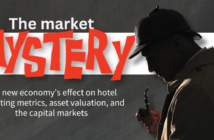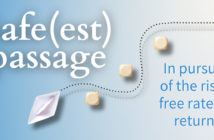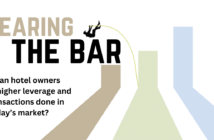Are today’s market signals being driven by the same factors as the last recession? What’s different this time?
by Rushi Shah
Tune into the news these days and you’re sure to find talking heads from around the world calling for an economic downturn. It’s natural to jump to this conclusion given the amount of time that has elapsed since the last recession and the length of this economic recovery. There are also increasing structural signals, such as an inverted Yield Curve, lack of inflation, overheated valuations for various asset classes including hotels, too much liquidity chasing deals, and lax lending, that typically indicate significant friction in the market. In the past, signals like these would have ignited fear of economic Armageddon. But today’s market is different and the forecast less ominous. Let’s explore why.
AN INVERTED YIELD CURVE – WHAT IT TELLS US
The Yield Curve is a graph that depicts the relationship between interest rates over a time horizon. It answers the question of what interest rate is the market willing to yield for borrowing money locked for a certain period of time. Historically, the Yield Curve has been a symbol of the price of money. Typically in normal markets, the rate to borrow for a short term is lower than the rate to borrow money for a longer term. This concept is very intuitive and results in a positively sloped Yield Curve where borrowing money for one month is at a lower rate than borrowing money for 10 years. During the past several months, however, the Yield Curve has flipped to a negative slope. In this environment, the rate an investor can yield for investing in short-term debt is higher than that of investing in long-term bonds. This phenomenon is known as an inverted Yield Curve.
The talking heads, market pundits, and economists always view the inverted Yield Curve as a sign of an impending recession. This has been a formal signal since the initial charting of the Yield Curve. If we look back, 100 percent of the time, an inverted Yield Curve has been a leading indicator of a major economic slowdown. To understand why this may not be the case today, we have to look at the birth of our country’s Federal Reserve Bank (the Fed).
WHAT IS THE FED?
Commissioned by Congress and President Woodrow Wilson in the aftermath of the Panic of 1907, the Fed was designed to be a fail-safe mechanism of our government. It was created as a monetary institution to govern and regulate the money supply and demand of the United States’ economy and the U.S. dollar. One of the major tenets of the Fed was that its job is to control the cost and velocity of the money as it relates to the U.S. dollar by managing economic growth and inflation. It accomplishes this by deciding at what interest rates the U.S. dollar can be borrowed or lent. Because it regulates the most important currency in the world, structurally, the Fed is designed to be a nonpartisan and objective force.
None of the former presidents have ever directly or indirectly tried to influence what the Fed does to the interest rates policy. Instead, the president’s role has typically ended at appointing the board’s chairman. This objectivity and independence has historically resulted in highly predictable interest-rate markets. The markets review the Fed’s transcripts, identify signals, and extrapolate those signals into long-term interest rates. But things aren’t as simple today. Let’s look at why.
ANALYZING THE YIELD CURVE
The short-term portion of the Yield Curve is usually anchored by the Fed’s tangible and public actions. The medium-term and longer-term portions of the Yield Curve, however, are shaped by the signals and guidance provided by the Fed’s chairman and board after each of their meetings. Long-term interest rates are nothing but a forecast by futures traders and market participants of where they believe short-term interest rates will be over a longer horizon.
The way the future traders are operating this time around, however, is very different from how they have acted in the past. One can argue that social media is the catalyst for this change. By publicly tweeting his expectations of the Fed, the president now has the ability to directly influence the Fed’s policy decision. The last time economic conditions looked like this, technology such as Twitter wasn’t widely used and didn’t have the strength to move markets. This time around, when the president publicly asks the Fed to lower rates, traders factor it into their forecast. This drives long-term interest rates lower, even without an actual economic slowdown.
While the Fed has often lowered rates to fight economic slowdown or to reduce inflation, it seldom reduces rates to help a trade war. The good news is lower rates in general help prolong our economic recovery. A fringe benefit of lower rates is they effectively neutralize the effects of tariffs by lowering the value of the dollar and making exports more attractive. This can then boost domestic manufacturing and consumption, creating a win-win for our country.
LACK OF INFLATION
One reason the Fed has been reluctant to lower interest rates is because of the lack of inflation in the economy. However, a tight labor market can result in wage inflation which eventually results in inflation. While we aren’t facing that issue today, the Fed appears to have put the cart before the horse. The market participants agree and that is the reason why they continue to bid the long-term interest rates lower. This action results in an inverted Yield Curve but isn’t necessarily a strong sign of a recession.
OVERHEATED VALUATIONS
There are pockets within the U.S. where the market is most definitely overheated and asset values are much higher than the cash-flow numbers actually justify. This signal is a result of lower long-term rates for the reasons explored above, and because the U.S. is the country of choice for investment and stellar risk-adjusted returns by foreign and domestic capital.
EXCESS LIQUIDITY
After the last recession, the institutional capital markets, as well as households, increased their cash reserves. Media and market participants have eagerly waited for the next recession, prompting everyone to use the time to hoard cash. This accumulation of liquidity or cash sitting on the sidelines in the form of private equity and debt funds, and other shadow banking participants, could potentially cause a self-correcting slowdown. In other words, any slowdown can correct itself by capital being deployed to exploit failed assets.
LAX LENDING MARKETS
Due to the amount of liquidity in the shadow banking system, one might think that the lending markets are lax. While capital is flowing freely, the metrics by which lenders gauge risk have evolved since the last recession. Today, lenders capture a much-more-accurate picture of the assets. This increased discipline is one more reason why we are enjoying a prolonged economic cycle this time around.
WHAT TO WATCH
If there is one signal to watch, it is the supply landscape. If the hotel industry continues to keep building just for the sake of building without a clear strategy, it will prove to be its own worst enemy. The demand has to grow in order for the supply to be able to absorb it. This simple mantra is what will keep this economic recovery sustainable.
 Rushi Shah is principal and CEO of the commercial mortgage and real estate investment banking firm and AAHOA Club Blue Member Mag Mile Capital. As a leader in hospitality financing, Shah specializes in structuring and placing high-leverage, non-recourse bridge and permanent debt with cash out for full – and limited-service hotels nationwide. Since joining the firm’s predecessor, Aries Capital, in 2015, Shah has structured and closed hundreds of millions in financing for all property types. Shah has held previous positions at Northern Trust and has an MBA from the University of Chicago’s Booth School of Business.
Rushi Shah is principal and CEO of the commercial mortgage and real estate investment banking firm and AAHOA Club Blue Member Mag Mile Capital. As a leader in hospitality financing, Shah specializes in structuring and placing high-leverage, non-recourse bridge and permanent debt with cash out for full – and limited-service hotels nationwide. Since joining the firm’s predecessor, Aries Capital, in 2015, Shah has structured and closed hundreds of millions in financing for all property types. Shah has held previous positions at Northern Trust and has an MBA from the University of Chicago’s Booth School of Business.




